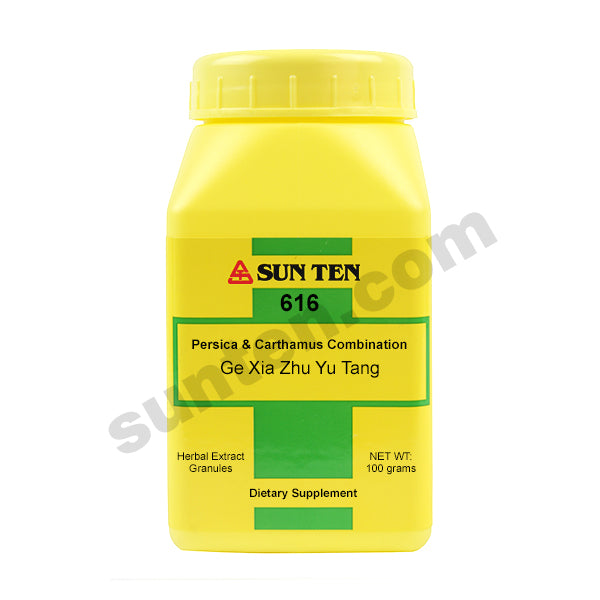Ge Xia Zhu Yu Tang
Persica & Carthamus Combination Granules | 膈下逐瘀湯
Practitioners: Please LOGIN to view the wholesale price. This item can only be purchased by a licensed practitioner. Find a practitioner
Please Note: This product contains tree nuts and may not be suitable for individuals with nut allergies. (tao ren)
Ingredients: Peach kernel (tao ren), Carthamus flower (hong hua), Cnidium root (chuan xiong), Tang-kuei root (dang gui), Pteropus (wu ling zhi), Moutan bark (mu dan pi), Red peony root (chi shao), Lindera root (wu yao), Corydalis (yan hu suo), Cyperus root (xiang fu zi), Chih-ko fruit (zhi ke), Chinese licorice root (gan cao).
| Mandarin: 膈下逐瘀湯 Pin-Yin: Ge Xia Zhu Yu Tang English: Persica & Carthamus Combination Romaji: Kakka Chikuo To Kanji: 膈下逐瘀湯 Kampo: No |

